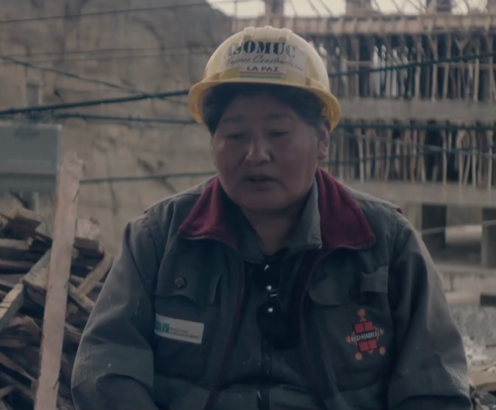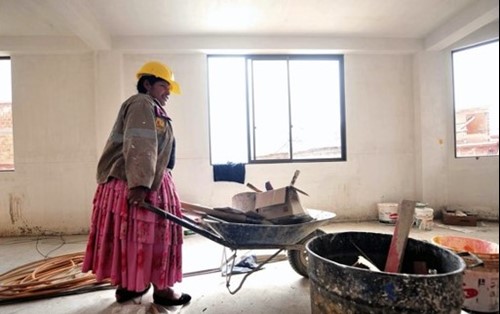Insight
Why is gender, diversity and inclusion important for standardisation?

Insight
Industry standards ensure the safe and timely production of quality products, but just how safe are they if they do not take gender and diversity into account?
This piece was written by Patricia Jordán. An expert in the NIRAS project “The Development and Use of Standards and Norms in Bolivia”, she is a Bolivian-Chilean economist who specialises in Gender Responsive Budgets (GRB) and has over 15 years of experience in strategic planning, program management and policy advocacy.
The use of standards ensures that products and services are adequately designed, with quality and best practices in mind. It also promotes innovation in companies and institutions. When a company meets quality standards, it improves productivity and safety for workers, increases customer satisfaction, and expands the conditions for market access.
There are standards for an infinite number of products, processes, or services. However, it is crucial to examine if these standards are gender sensitive and how diversity and inclusion is incorporated into the institutions and organisations.
National Standards Bodies (NSBs) are the foremost standards organisations for standard development. NSBs should support gender equality as well as promote diversity and inclusion in organisations. However, there is no parity of representation in standards development, a lack of gender responsiveness in standardisation and there is no guidance to facilitate inclusion. To put it bluntly, standards have been designed by men and for men.
Gender-sensitive standards recognise gender-specific needs in order to develop procedures and measures that guarantee the effectiveness of the standards for both men and women. A gender-sensitive standard is not another standard for gender issues; rather, it ensures the impact of standardisation by incorporating a gender perspective through a strategy that enables organisations to achieve real inclusion.
To incorporate a gender and diversity dimension into their work, some National Standards Bodies have joined the commitment to achieve the SDG5, thus they have signed the UNECE's Declaration on Gender Responsive Standards and have also made progress in diversity and inclusion processes through various initiatives, such as:
Another example is Bolivia. IBNORCA is the beneficiary of “The Development and Use of Standards and Norms in Bolivia”, project funded by the Swedish International Development Cooperation Agency (SIDA) and implemented by The British Standards Institution (BSI) in partnership with NIRAS. IBNORCA is committed to strengthening the Gender, Diversity, and Inclusion (GD&I) approach as one of its main cross-cutting components in the project. One of the prioritised activities is GD&I mainstreaming within IBNORCA's strategic planning, as well as designing an Action Plan.
In the beginning of February 2023, various meetings were arranged with entities from the public and private sectors in Bolivia, as well as with civil society organisations, to discuss the strategy for incorporating a Gender, Diversity, and Inclusion approach into the development and dissemination of standards.
The meetings also aimed to address how IBNORCA cooperates with industry experts, government agencies, the private sector, academia and civil society to create a common agenda and engagement that guarantees the effective incorporation of GD&I into the standards.
IBNORCA is the National Standardization Body (NSB) of Bolivia, a private non-profit organisation. It promotes the development of Bolivian technical standards, with the open participation of all interested stakeholders. In commemoration of International Women's Day, March 8, 2023 (IWD 2023), Bolivia's NSB has started to establish a Technical Committee to review the ISO 53800 standard – Guidelines for the promotion and application of gender equality and the empowerment of women.

In one of the meetings with representative organisations from relevant stakeholders, the General Secretary of the Women Builders Association of Bolivia, María Cáceres, gave concrete and real testimonies of how standards are currently not incorporating a gender perspective:
• The size of the safety helmets does not fit the head of an average woman;
• Work uniforms and overalls are not adapted for women when using the toilet;
• General lack of separate restrooms for women.
Recognising the importance of working towards gender, diversity and inclusion standards is the first step and allows us to initiate the process to reduce the impact of gender biases in standards and in standard-setting processes and to achieve real inclusion and diversity in the future. Engaging stakeholders and building consensus for the advancement of inclusivity and diversity is the next step.
The milestones for GD&I must incorporate the particularity of each country because the realities are entirely different from one to another. That is why the value of the consumer's perspective is vital, in this case, women. Women in each country have needs and behaviours that are not fully understood and the range of risks and consequences for women must be measured, which is why more women must be part of the process as stakeholders.

GD&I is an important issue and steps towards equality. It will matter until in the future at least some products and services have gender-sensitive standards and when companies incorporate diversity and inclusion into their human resources management guides, and when organisations have raised awareness that standards and technical regulations are risk mitigation tools not only for men but also for women.


